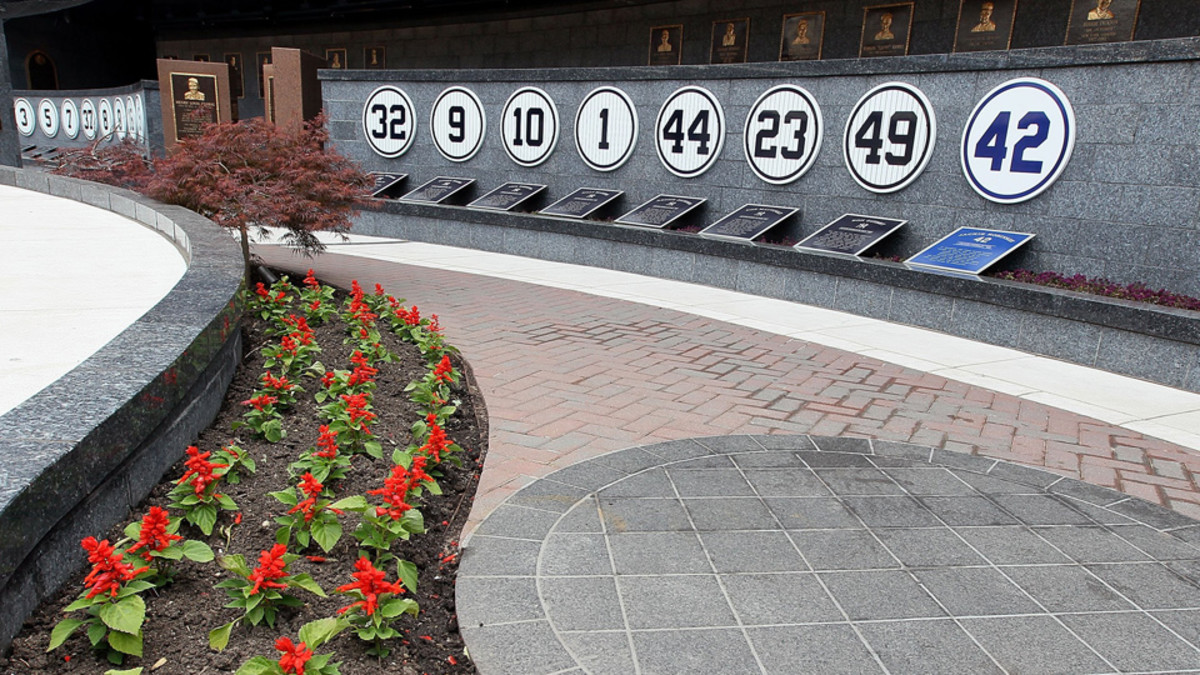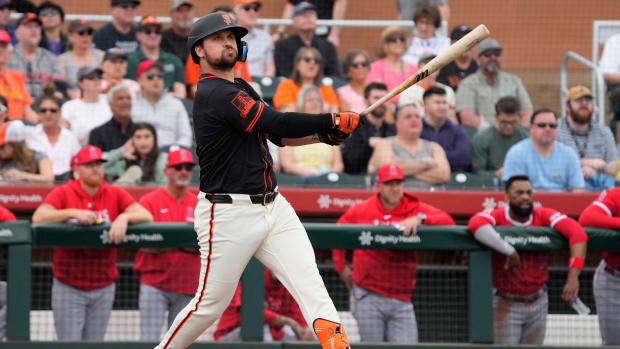Ballpark Quirks: Yankee Stadium's living museum in Monument Park
Ballpark Quirks is a series on the distinctive features and oddities that make up each of MLB’s 30 parks. This week’s pick: Yankee Stadium’s Monument Park.
The New York Yankees had a monumental plan for the newest version of Yankee Stadium when it opened it 2009. That plan included a lot more space to display the franchise's history of greatness in Monument Park.
The first Monument Park wasn’t designed with the same long-term care as the latest version. What started in 1929 with a single plaque for late Yankees manager Miller Huggins had become, by the early 1970s, a smattering of plaques and monuments placed near an in-play flag pole in a drastically deep centerfield. The park started to take a more formal approach when the renovated Yankee Stadium opened in 1976, placing the park behind the left-centerfield fence. The area became accessible to the public in 1985 and had since grown to include dozens of retired numbers, monuments and plaques. All those pieces came with the Yankees five years ago when they moved to their new stadium, just across the street from the original one.
“The Monument Park thing for us was so much fun,” Populous architect Earl Santee, designer of Yankee Stadium, told SI.com. “We took the old monuments over. We saw them dug up, we had to take care of them a little bit and we put them where it made sense.”
Santee also enlarged the area from what it was in the old ballpark, making it “large enough to add more.”
For Santee, placing the park behind the centerfield fence -- closest to where it was originally -- in the new stadium was an early and easy decision. But actually making it work in that spot wasn't as simple as deciding where it should go.
Ballpark Quirks: Hitting with the fishes in Miami's Marlins Park
Designers wanted the park—highlighted by its pearl blue granite from Finland—visible from the field when watching a game, a feat made difficult by its location under the large batter’s eye. The Yankees also needed access to the space, with tours constantly moving through it (Monument Park is open to the public up until 45 minutes prior to a game's scheduled start time). Combining the needs of both those requests presented a challenge, but in the end, Santee was able to make sure the park had some level of visual access from the seats -- even if the batter’s eye and outfield fence distract from its presence -- and pedestrian access from within the stadium.
Just having enough space for the current monuments wasn’t enough, though. “We wanted to add to it,” Santee said. “It was a living monument to past, present and future Yankees and we wanted the ability to expand. That is a really great thing about it.” Monumental, even.
Tim Newcomb covers stadiums, design and gear for Sports Illustrated. Follow him on Twitter at @tdnewcomb.



































